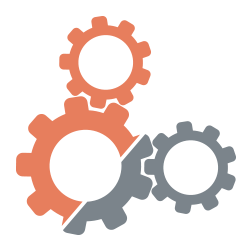We Make Your Website Work For You
Create More Leads and Sales Through Your Website
SCHEDULE A CALL
Let's Talk
Work Together
Grow Your Business
Frustrated With Your Website?
We have all been there.....
That exciting feeling many business have when their shiny new website launches!
Unfortunately for many, that feeling rarely lasts. Once it becomes clear that there are very few visitors to your website and even less potential customers contacting you.


Missing Out On New Customers?
How do your potential customers find you?
Your website is only part of a larger marketing plan. Often web designers can design beautiful websites but do not consider how your website fits into an overall web marketing strategy that is geared to produce results by converting site visitors. That's where we come in with our brand site build philosophy. Find out more about it by clicking the button below:
SCHEDULE A CALL
WE CREATE DIGITAL SUCCESS STRATEGIES
With Our Bespoke Web Marketing Plan Your Visitors WILL Take Action
Clarify Your Message
You need to get clear with your message so that your customer knows exactly what you offer, how it benefits them and how to get it.
Rebuild Your Website
Adapt the most important sections of your website to engage visitors and guide them to take action.
Lead Generator
Identify which of your products/services is most effective at attracting potential customers and how to utilize it to increase sales.
Automated Contact
Automated email campaigns that will help you build trust with potential customers and invite them to make a purchase without feeling 'pushed'
SCHEDULE A CALL
Does Not Generate Sales......

Joe Hartnett
"I have known, worked with, and highly respected Joe Buhler from the mid-1990s when he led the global Switzerland Tourism team to build www.myswitzerland.com in 7 languages and 30+ world markets. Joe has consistently pioneered technologies that help brands succeed in the digital marketplace. He builds sensibly priced tools previously available only to big corporations. These enable local and regional firms to cost-effectively build their business by growing their customer base."

Susan Black
Joe is one of the most creative Destination Marketing strategists I know. He has been ahead of the curve in both online marketing and partnership development, and his insights exhibit a deep understanding of the ever-changing travel industry landscape. Whilst Director, North America at Switzerland Tourism, Joe led the execution of many ground-breaking marketing programs. In addition to his knowledge and creativity, Joe is also delightful and a pleasure to work with.
Let's Talk
Schedule a call with one of our team to review your business and your existing online marketing activities
Work Together
We will work with you to create a bespoke web marketing plan that will help you clarify your message and....
Grow Your Business
Achieve a consistent supply of new customers and sales, grow your business and generate loyal returning customers
We believe creating an engaging and high converting website that attracts visitors and turns them into customers should be accessible for all business owners which is why we created our bespoke Digital Marketing Strategic Plan.
HERE'S HOW WE DO IT
- Let's Talk - Schedule a call with one of our team to review your business goals and your existing online marketing activities.
- Work Together - We will work with you to create a bespoke digital marketing plan that will help you clarify your online message.
- Grow Your Business - Achieve a consistent supply of new customers and sales, grow your business and generate loyal returning customers.
SCHEDULE A CALL
In the meantime download a copy of our Website Success Strategy
stop feeling frustrated and start growing your business today.
DRIVING WEBSITE TRAFFIC
Find more customers by driving fresh interest based traffic from popular websites and
re-engage with your website's visitors using unique retargeting techniques.
VIDEO MARKETING
Video Ads convert more of your customers. Our engaging video ads use a proven formula to engage your customers and boost your sales regardless of your industry.
.
DISPLAY AD CREATION
We've researched the top 10,000 "Top Converting" Ads and identified the top 100 designs thar PROVEN to engage with your customers.
REPUTATION MARKETING
Improving your reputation with both existing and potential customers is more important than ever. We help you set up simple & effective campaigns.
STRATEGIC PLANNING
Studies show a solid business plan doubles your chances of success. We help you map out plans and strategies that will help you grow your business.
WEBSITE SECURITY
Complete Website Security that
will provide you with peace of mind that your website is safe and secure for you and your customers.
SCHEDULE YOUR CALL
CONTACTS
T: +1 203.529.4841
jeb@buhlerworks.com
IMPORTANT LINKS
ABOUT US
Many business owners are frustrated that their websites generate very few new sales. Our Website Success Strategy will help you produce a consistent flow of new customers that you can then convert into loyal repeat ones and grow your business
© 2024 buhlerworks All Rights Reserved. 2204 Avalon Drive, Shelton, CT 06484, Shelton, CT 06484 . Contact Us . Terms of Service . Privacy Policy



